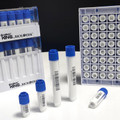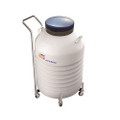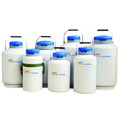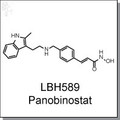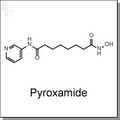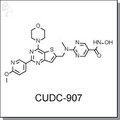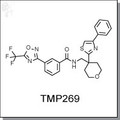 Loading... Please wait...
Loading... Please wait...- Home
- Stem Cell related
- Trichostatin A (TSA) | HDAC inhibitor
- Home
- Disease Area
- Oncology
- Trichostatin A (TSA) | HDAC inhibitor
- Home
- Cellular Mechanism
- Epigenetics
- Histone Deacetylases (HDAC)
- Trichostatin A (TSA) | HDAC inhibitor
Product Description
Trichostatin A (TSA) is a potent histone deacetylase (HDAC) inhibitor. It inhibits HDAC 1, 2, 3, 6, 10, 11 at IC50s of less than 10 nM, with over 300-fold selectivity against class IIa HDACs.[1] TSA affects DNA replication and gene expression by inhibiting HDAC activity and therefore altering the histone modifications and access of DNA inside chromatin.
Trichostatin A induces apoptosis and cell growth arrest at both G and G/M phases. As HDACs are overexpressed in many cancer types, TSA is widely used to probe the tumorigenesis mechanism targeting HDAC.[2] Trichostatin A was found to prevent the differentiation of embryonic stem cell,[3] while TSA treatment increased functional characteristics of human ESC/iPSC-derived cardiomyocytes.[4]
Technical information:
| Chemical Formula: | C17H22N2O3 | |
| CAS #: | 58880-19-6 | |
| Molecular Weight: | 302.37 | |
| Purity: | > 98% | |
| Appearance: | Brown | |
| Chemical Name: | (R,2E,4E)-6-(4-(dimethylamino)benzoyl)-N-hydroxy-4-methylhepta-2,4-dienamide | |
| Solubility: | Up to 50 mM in DMSO | |
| Synonyms: | Trichostatin A, TSA |
Shipping Condition: The product is shipped in a glass vial at ambient temperature.
Storage condition: For longer shelf life, store solid powder or DMSO solution at -20oC desiccated.
Reference:
| 1. | Lobera M, et al. Selective class IIa histone deacetylase inhibition via a nonchelating zinc-binding group. Nat Chem Biol. 2013; 9(5):319-25. Pubmed ID: 23524983 |
| 2. | Timmermann S, et al. Histone acetylation and disease. Cell Mol Life Sci. 2001; 58(5-6):728-36. Review Pubmed ID: 11437234 |
| 3. | Lee JH, et al. Histone deacetylase activity is required for embryonic stem cell differentiation. Genesis. 2004; 38(1):32-8. Pubmed ID: 14755802 |
| 4. | Otsuji TG, et al. Dynamic link between histone H3 acetylation and an increase in the functional characteristics of human ESC/iPSC-derived cardiomyocytes. PLoS One. 2012; 7(9):e45010 Pubmed ID: 11437234 |
Other Information:
Product Specification (pdf)
MSDS (pdf)
Certificate of Analysis is available upon request.


